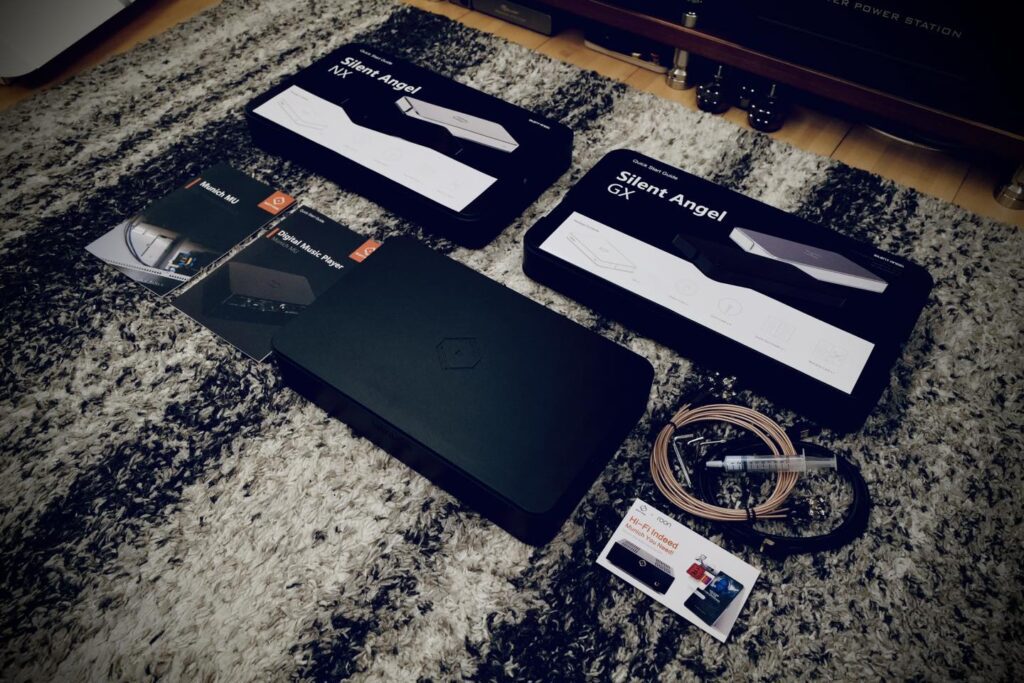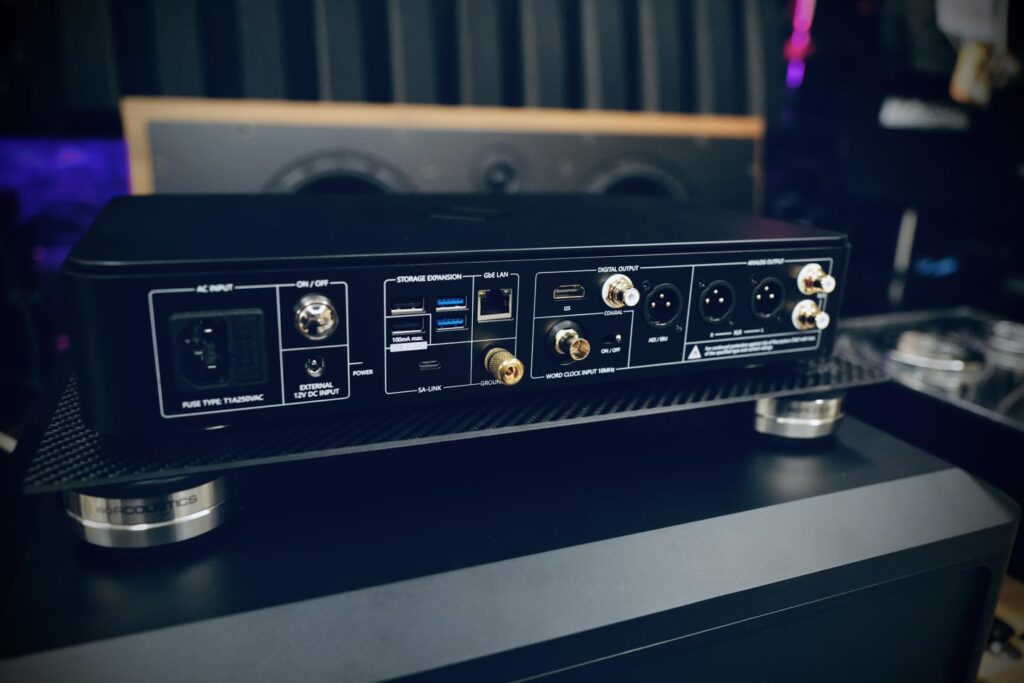I often get private messages asking, “Hi Lance , I’m thinking of setting up a digital streaming system, can you give me some advice?”
When it comes to those with no budget limits, who are financially strong, it’s relatively easy to make recommendations after discussing their desired direction, current system setup, usual music genres, and listening habits.
But when it comes to a “very limited” budget (especially the really tight ones), I usually advise them not to rush into spending too much. Instead, I recommend a few entry-level combinations that might catch their eye, and suggest they just ‘listen casually’.
You really shouldn’t think too much about it right now. Better to save that money for investing in other analog components of your system.


Especially in recent years, the era of online lossless music streaming has arrived. What is being tested is the hardware manufacturers’ ability to develop and integrate software, which has progressed leaps and bounds over the past few years. Every year there seems to be revolutionary new products.
If you’re not like me, who, a few years ago, went all-in, trying every way to push myself to the top tier of digital streaming, you’ll find yourself unknowingly spending millions TWD to reach a satisfactory performance.
At least when friends and seniors come to my place, they can’t tell the difference between CDs and streaming.
If you’re just starting out, I really advise you to see all these developments as an ‘entry point’.
Don’t rush.
A top-of-the-line switch that cost two hundred thousand a few years ago might now be outperformed by the latest hundred thousand dollar model. It’s really brutal.



Over the past few years, I’ve tried a vast array of equipment, ranging from entry-level to the highest-end High-End brands. I now have a clearer outline analysis of the whole market direction in my mind. So, I can understand how terrifying this development is. Those who don’t keep experimenting along the trajectory just won’t understand the differences, nor the changes felt year by year.
The test of the Silent Angel’s latest Switch (Bonn NX Ethernet Switch), Clock (Genesis GX Word Clock), and Streamer (Munich MU) is a vivid example.



Let’s start with the results: I’m definitely keeping the NX+GX. This combination of Switch and Word Clock already outperforms the three switches I currently have in my system (Silent Angel N16 + PPA OCXO QUAD + Ansuz Powerswith D2). I won’t even mention the numerous switches I’ve replaced over the years, like Melco, Sotm, Telegärtner, Diva, etc.
I really admire these manufacturers from the IT industry who have crossed over into audio and continue to break through, striving to solve the unsolved mysteries in the 0101 audio world.
The combination of Silent Angel Bonn NX Ethernet Switch and Genesis GX Word Clock, priced at around 100,000 TWD each, marks Silent Angel’s first foray into a higher price bracket.







Can you get by without the clock? I’m sorry, but you really can’t. Adding the clock is something you definitely can’t go back from. If you consider this product solution, you must budget 200,000 TWD unless you can resist trying it. Once you’ve heard it, there’s no turning back. It brings more quietness, stability, and clarity. It significantly reduces information loss, elevating the sound density of digital streaming to an extremely high level.




Of course, this is related to my insistence on not using USB interfaces with Grimm Audio MU-1 and Aqua LinQ. Both insist that AES/EBU will be the best choice. I don’t understand why these recording studio folks are so insistent. I’ve asked several famous brands in the audio industry that design streamers, and they all have their own perspectives and optimization methods.
But indeed, after trying so many streamers and various performances of asynchronous USB, SPDIF, except for some audio brands that have their own Link (like i2S) that can achieve better density, I still prefer the sound coming from the MU-1 bridge LinQ (using MU-1 alone, I’m still not satisfied; it really needs LinQ HQP to help it up a notch).
It has also not been replaced by any equipment that continues to be tested at my place. If the processing between your streamer and DAC is not good enough, it will further highlight the need for a Switch to ‘help’ your system.




In terms of practicality, theory aside, if any audio switch in your digital system makes an ‘audible’ impact and improvement, and your streamer is not bad, then you must try the NX + GX.
No wonder recently, many digital audio systems around the world have switched to them, even some TAIKO Extreme users have abandoned their own switches in favor of the Silent Angel NX / GX combination (I believe those who can afford TAIKO are not considering budget).
I won’t go into detailed specifications as there are plenty of test reviews online. Just a brief chat here.
GX comes with four clock cables, 2 x 25MHz outputs, and 2 x 10MHz outputs, which can be used for 4 devices. It’s actually quite a good value.


NX is designed as a new generation of 8 isolated network ports, all gold-plated (the designer says this step greatly affects the sound). You can turn off the LED indicators of the interface (indeed, turning off the LEDs makes the background quieter).
You can switch freely between using the internal clock or connecting to the GX 25MHz external clock.
Both devices have their own independent switchable power supplies. You can also switch to an external DC linear power supply, depending on how well you handle power in your system.
In my system, because of Telos Monster Power Station ‘s handling of power, even a battery wouldn’t sound better than the monster. So after trying it out, I still opted to go straight from the monster’s AC.
If your power handling isn’t specially enhanced, I recommend switching to an LPS for improved performance.
Both devices have grounding terminals, which users can decide whether to use. I connected it to the Telos Grounding Monster for active elimination, which indeed brought the performance up a notch.
Anyway, in the end, I even tried connecting all three previous switches with GX/NX together, totaling 48 ports and 11 network cables. Unexpectedly, it was even better (I had tried up to four or five switches a few years ago, and couldn’t hear any improvement…).


A larger and wider sound field, crystal-clear imaging, combined with smooth lines and musicality, truly made me marvel at the advancement of the times.
If your system is high-level enough, don’t believe that switches don’t have an impact. Just look at the setups of major digital brands at exhibitions over the years (I’m very serious about observing their changes and connection logic every year). It’s impossible not to value this aspect.
Getting digital streaming right is no less complex than vinyl, and it’s not as simple as 0101. If interested, you can contact the distributor in Taiwan, and try it out at home.


As for the Munich MU Streamer (with built-in DAC), it’s just an 80,000 TWD piece. There’s still a gap compared to the performance of my own streamers. I can’t be too demanding, given the significant price difference.
Frankly, the built-in DAC is good, the Munich MU sound is very listenable and warm. The APP operation is quite convenient. For a price under 100,000 TWD, including a DAC, I think it’s very competitive in the market.
I heard Taiwan is the second market to launch it, with the first batch already sold out in many countries. If your budget is within 100,000 TWD, it’s worth trying.

